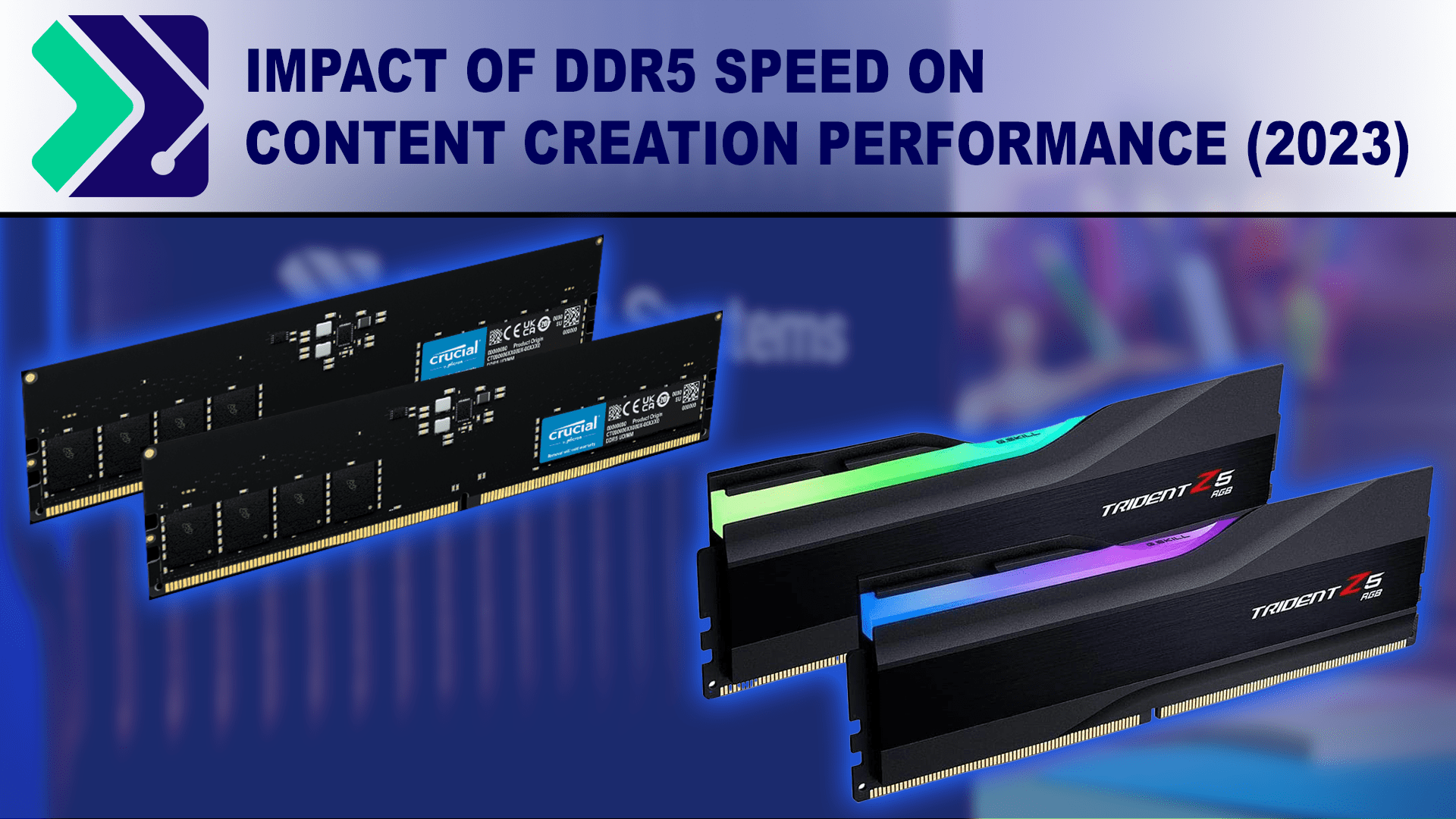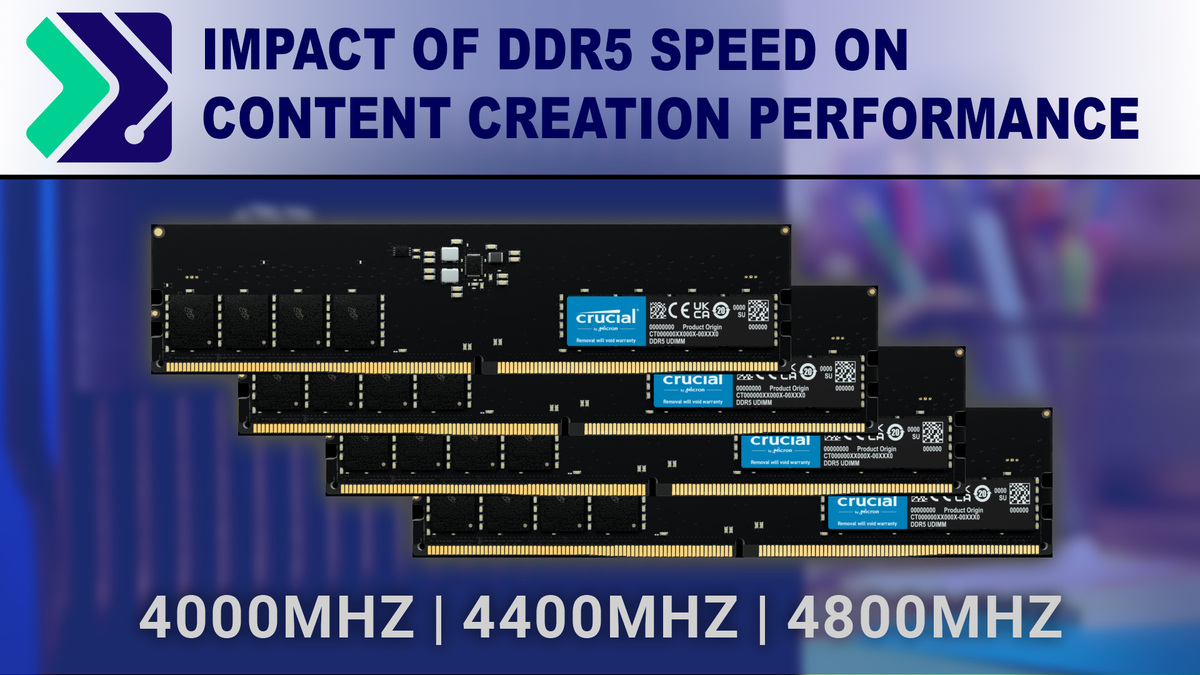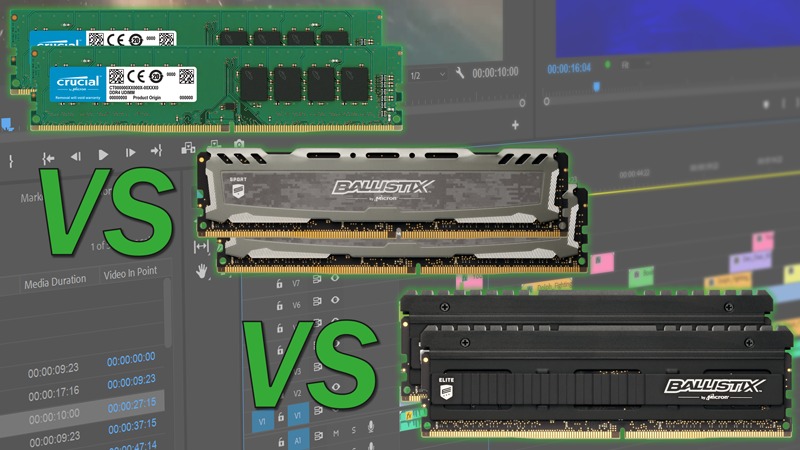DDR5 memory has kits rated for up to 8400 Mbps, while desktop CPUs only officially support up to 5600 Mbps. How much does running at official specifications actually impact performance in common content creation applications?


DDR5 memory has kits rated for up to 8400 Mbps, while desktop CPUs only officially support up to 5600 Mbps. How much does running at official specifications actually impact performance in common content creation applications?

The latest Intel 12th Gen processors officially support a range of DDR5 RAM speeds between DDR5-3600MHz and DDR5-4800MHz depending on a number of factors including how many RAM slots are on the motherboard, how many sticks are used, and whether the sticks are single or dual rank. But if you stick with JEDEC specifications for frequency and timing, how much does this actually impact performance in common content creation applications like Photoshop, Premiere Pro, and Unreal?

While we generally stick to the RAM speed that is officially supported by a processor, we get a lot of comments claiming that we are limiting performance by not using higher frequency memory. This begs the question: does RAM speed actually impact real-world performance in video editing applications?

We at Puget Systems have always held the belief that a computer’s hardware should be specifically tailored to match what the computer will be used for in order to maximize its effectiveness. Different programs make use of hardware in different ways, and knowing how the program behaves is important to determine what pieces of hardware need to be more powerful, and which are not as critical. In this article we want to determine if the speed and configuration of RAM affects the performance of Photoshop CS6 and if so by how much.